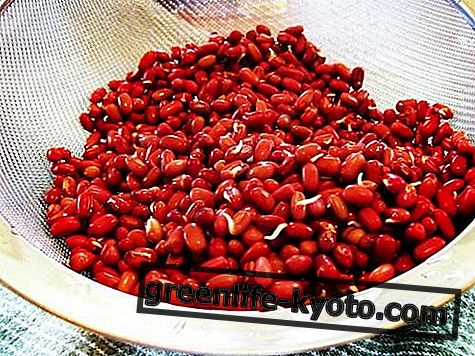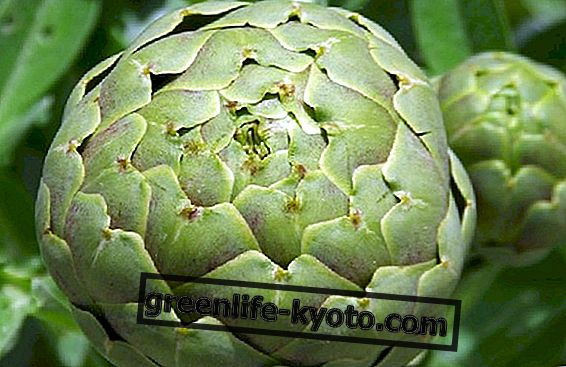Azuki bean sprouts are rich in enzymes, essential amino acids and vitamin B. They strengthen the blood and are useful in case of exhaustion and for problems related to menopause . Let's find out better.

Description of the azuki bean
Belonging to the same genus of green soy and closely related to the common bean, the azuki bean ( Vigna angularis ) is a fabacea native to Asia, whose reddish seeds with a white eyelet resemble small beans, approximately five millimeters.
Humans have cultivated it since time immemorial and there are traces of its use in the Himalayan highlands dating back to 4000 BC. It is probably native to Korea and Manchuria, while later on the Himalayas it was crossed with other species until it reached the current domesticated state . In addition to sprouting, it is mainly used for the preparation of sweets, boiling it together with sugar to obtain various pastries. The seeds can also be boiled and then drink the cooking water, a bit like an infusion.
Composition of azuki bean sprouts
In the buds we can generally find the same components of the adult plant but in much higher percentages. Azuki bean sprouts stand out as a good resource of essential enzymes and amino acids, of many vitamins, especially B9, B1 and B5, of many trace elements, among which we mention in particular phosphorus, zinc, iron and magnesium. All the Vigna genus gel beans, and therefore also the azuki beans, are rich in protein, dietary fiber and lecithin.
Properties and benefits
The azuki bean sprouts can very well be compared to a natural supplement and are perfect for growing boys, for those who have to recover from injuries and illnesses, for sportsmen who want to stay on top, for those who suffer from problems related to the change of season or at menopause.
The fiber of the buds helps to keep the arteries clean, its metals strengthen the blood and the B vitamins are very effective against possible fatigue and weakness.
You can learn more about the properties of vitamin B and what foods contain it

Organoleptic characteristics and uses of azuki bean sprouts
When well cultivated, the shoots are pleasant to eat, refreshing and rehydrating, crunchy and, if cultivated in low light, they are very watery and refreshing. The possible uses in the kitchen are innumerable: they are excellent raw in mixed salads but are also suitable for juices and extracts; many use them to make creams to spread on bread or on croutons ; always pleasant in soups, in soups and as a side dish for ethnic dishes.
Germination secrets
The production method of the azuki bean sprouts is very similar to that used for the sprouting of its close relative (green soy) and, more or less, of the legumes in general: take the well-dried seeds and immerse them for a whole day in plenty of water, which will be changed approximately after twelve hours.
When the shoots cover the integument, the well-drained seeds will go into the sprout or the basin, making sure that there are no stagnant water. After about four days the buds will have reached the optimal dimensions (around four centimeters) and they will be ready to be collected: the ideal would be to proceed before they emit the foliar apparatus. A good way to keep them fresh and crunchy is to grow them in the dark, perhaps in the fridge, so that they produce less cellulose and preserve the entire water reserve.













